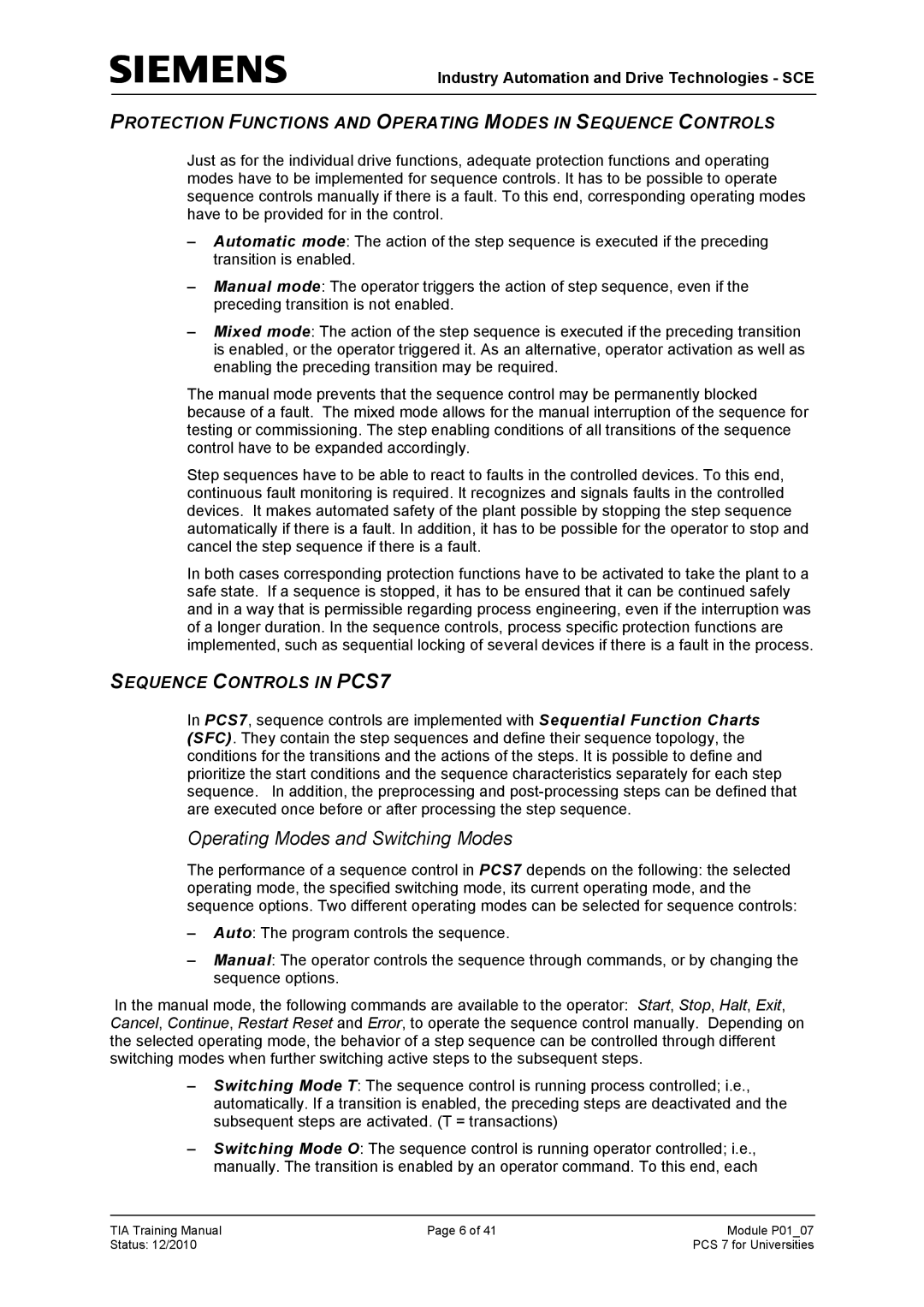
Industry Automation and Drive Technologies - SCE
PROTECTION FUNCTIONS AND OPERATING MODES IN SEQUENCE CONTROLS
Just as for the individual drive functions, adequate protection functions and operating modes have to be implemented for sequence controls. It has to be possible to operate sequence controls manually if there is a fault. To this end, corresponding operating modes have to be provided for in the control.
–Automatic mode: The action of the step sequence is executed if the preceding transition is enabled.
–Manual mode: The operator triggers the action of step sequence, even if the preceding transition is not enabled.
–Mixed mode: The action of the step sequence is executed if the preceding transition is enabled, or the operator triggered it. As an alternative, operator activation as well as enabling the preceding transition may be required.
The manual mode prevents that the sequence control may be permanently blocked because of a fault. The mixed mode allows for the manual interruption of the sequence for testing or commissioning. The step enabling conditions of all transitions of the sequence control have to be expanded accordingly.
Step sequences have to be able to react to faults in the controlled devices. To this end, continuous fault monitoring is required. It recognizes and signals faults in the controlled devices. It makes automated safety of the plant possible by stopping the step sequence automatically if there is a fault. In addition, it has to be possible for the operator to stop and cancel the step sequence if there is a fault.
In both cases corresponding protection functions have to be activated to take the plant to a safe state. If a sequence is stopped, it has to be ensured that it can be continued safely and in a way that is permissible regarding process engineering, even if the interruption was of a longer duration. In the sequence controls, process specific protection functions are implemented, such as sequential locking of several devices if there is a fault in the process.
SEQUENCE CONTROLS IN PCS7
In PCS7, sequence controls are implemented with Sequential Function Charts (SFC). They contain the step sequences and define their sequence topology, the conditions for the transitions and the actions of the steps. It is possible to define and prioritize the start conditions and the sequence characteristics separately for each step sequence. In addition, the preprocessing and
Operating Modes and Switching Modes
The performance of a sequence control in PCS7 depends on the following: the selected operating mode, the specified switching mode, its current operating mode, and the sequence options. Two different operating modes can be selected for sequence controls:
–Auto: The program controls the sequence.
–Manual: The operator controls the sequence through commands, or by changing the sequence options.
In the manual mode, the following commands are available to the operator: Start, Stop, Halt, Exit, Cancel, Continue, Restart Reset and Error, to operate the sequence control manually. Depending on the selected operating mode, the behavior of a step sequence can be controlled through different switching modes when further switching active steps to the subsequent steps.
–Switching Mode T: The sequence control is running process controlled; i.e., automatically. If a transition is enabled, the preceding steps are deactivated and the subsequent steps are activated. (T = transactions)
–Switching Mode O: The sequence control is running operator controlled; i.e., manually. The transition is enabled by an operator command. To this end, each
TIA Training Manual | Page 6 of 41 | Module P01_07 |
Status: 12/2010 |
| PCS 7 for Universities |
